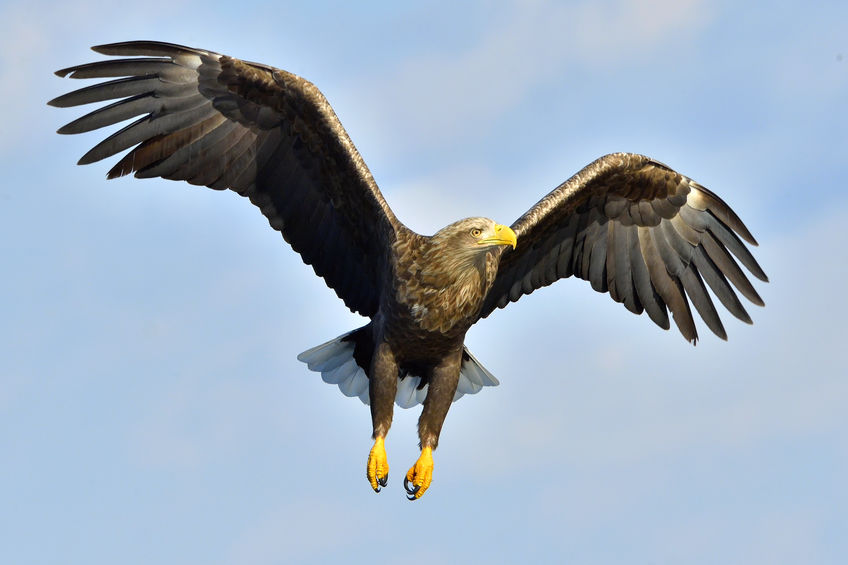
Sheep farmers have urged caution over plans to reintroduce more white-tailed sea eagles in England, warning that new releases risk outpacing the science.
The National Sheep Association (NSA) is calling on conservation bodies to focus on long-term monitoring of existing sea eagle populations before introducing additional birds.
Chief executive Phil Stocker said: “Evaluating how existing populations spread naturally in an organic way is a better indicator of species viability than undertaking reintroductions. It also allows us to learn more about their compatibility with other land use interests.”
The NSA highlighted growing concern among members in Exmoor (Devon/Somerset) and Cumbria, where pro-reintroduction groups are developing proposals for new releases.
An Exmoor plan has been submitted to Natural England, while a Cumbrian proposal is in early consultation.
NSA policy manager Michael Priestley said the association had opposed the Exmoor plan and responded to the Cumbria consultation.
“NSA has opposed the Exmoor proposal, and has responded to the Cumbria consultation, stating clearly that we believe experiences of farmers and crofters in Scotland show the dangers sea eagles can pose to flock viability in instances where rogue birds adapt to hunt lambs.”
The NSA cites reports from crofters and farmers in Scotland of localised predation where birds have shifted from fish to terrestrial prey, including sheep.
It says hunting behaviour may vary depending on population density, estuarine habitat, fish stocks, individual bird behaviour and reintroduction methods.
Conservation groups, meanwhile, argue that sea eagle reintroductions can help restore lost apex predators and rebalance ecosystems, though farming organisations remain cautious about potential impacts on livestock.
The NSA has also highlighted pressures on other species, pointing to more than 8,000 species on England’s IUCN Red List and 70 species on the British Trust for Ornithology Red List — many of which, it says, benefit from “sympathetic and multi-functional livestock grazing.”
The organisation is calling for extended tracking and evaluation of breeding pairs to understand how the birds are faring and where they are settling.
Mr Priestley added: “NSA does not advocate for further releases and instead calls on relevant organisations to invest in extending the monitoring and project evaluation work to see how breeding pairs are faring and where they are moving.
“NSA feels that stakeholder engagement can be more inclusive and speak to more farmers in more open and indiscriminate meetings.
"We also feel that the best sign of a bird being happy with a habitat is if it moves in of its own volition. This is far more akin to a natural and sustainable adaptation.”
